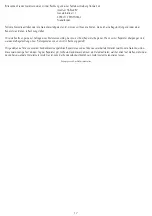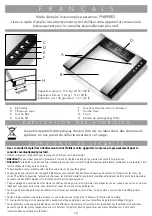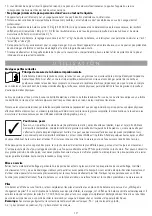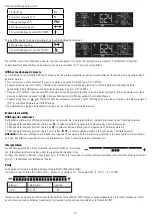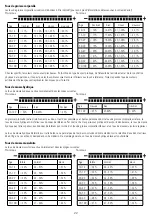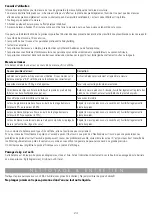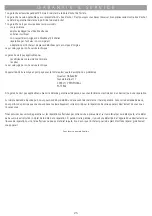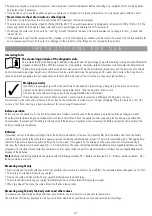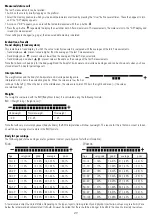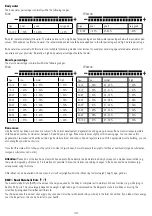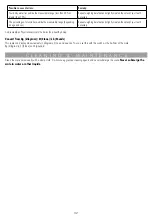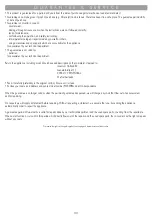
AMR = Active Metabolic Rate
The energy consumption of a human being rises with increasing physical activity and is measured on the diagnostic scale in relation to the degree
of activity entered (1-5). To maintain your existing weight, the amount of energy used must be reintroduced into the body in the form of food and
drink. If less energy is introduced than is used over a longer period of time, your body will obtain the difference largely from the amount of fat
stored and your weight will reduce. If, on the other hand, over a longer period of time more energy is introduced than the total active metabolic
rate (AMR) calculated, your body will be unable to burn off the excess energy, and the excess will be stored in the body as fat and your weight will
increase.
Results in relation to time
Note that it is only the long-term trend which counts. Short period fluctuations in weight over a few days are mostly the result of a loss of fluid.
The interpretation of the results will depend on changes in your:
overall weight and body fat, body water and muscle percentages, as well as on the period during which these changes take place. Rapid changes
within days must be distinguished from medium term changes (over weeks) and long term changes (months).
A basic rule is that short term changes in weight almost exclusively represent changes in water content, whereas medium and long term changes
may also involve the fat and muscle percentages.
• If your weight reduces over the short term, but your body fat percentage increases or remains the same, you have merely lost water – e.g. after a
training session, sauna session or a diet restricted only to rapid weight loss.
• If your weight increases over the medium term and the body fat percentage falls or stays the same, then you could have built up valuable muscle
mass.
• If your weight and body fat percentage fall simultaneously then your diet is working – you are losing fat mass. Ideally you should support your
diet with physical activity, fitness or power training. By this means, you can increase your muscle percentage over the medium term.
Tips for using the scale
Important when measuring body fat/body water/muscle percentage:
• The measurement may only be carried out while barefoot and it is helpful if the soles of your feet are slightly damp. Completely dry soles can
result in unsatisfactory results, as they have insufficient condutivity.
• Stand still during the measurement.
• Wait several hours (6-8) after unusually strenuous activity.
• Wait approx. 15 minutes after getting out of bed so that the water in your body can be distributed.
The measurement is not reliable for:
• Children under approx. 10 years of age;
• Professional sporters and bodybuilders;
• Pregnant women;
• Persons with fever, undergoing dialysis, with symptoms of edema or osteoporosis;
• Persons taking cardiovascular medication. Persons taking vascodialating or vascoconstricting medications;
• Persons with substantial anatomical deviations in the legs relative to their total height (leg length considerably shorter or longer than usual).
Incorrect measurement
If the scale detects an error during weighing, «Err» appears in the display.
Possible causes of errors:
Remedy:
The scale was not activated before stepping on.
When you stand on the scale before “0.0“ appeared in the display, it will
not operate correctly.
Activate the scale the right way and repeat the measurement.
The maximum load-bearing capacitity of 150 kg. (330 lbs) was
exceeded.
Only weigh the maximum permissible weight.
The electrical resistance between the electrodes and the soles of your feed
is too high (e.g. with heavily callused skin).
Repeat weighing barefoot.
Slightly moisten the soles of your feet if necessary. Remove the calluses on
the soles of your feet if necessary.
You were not standing still on the scale.
Stand still during the measurement.
Your body fat lies outside the measurable range (less than 5% or greater
than 50%).
Repeat weighing barefoot and slightly moisten the soles of your feet if
necessary.
31
Summary of Contents for PW 890 BG
Page 34: ...Notities Notizen Notes Notes 34...

